上海鼎徵仪器仪表设备有限公司代理销售VDA233-102低温循环腐蚀盐雾箱
VDA233-102低温循环腐蚀盐雾箱
VDA233-102低温循环腐蚀盐雾箱
VDA233-102 Cyclic corrosion testing of materials and components in automotive construction

0 Preface
This specification has been created jointly by the automotive, steel and aluminum industry.
To document the close cooperation during the development of this agreed upon laboratoryscale cyclic corrosion test for the development of new materials and coatings for applications in the automotive industry, this specification is published with identical content as both StahlEisen-Prüfblatt 1850 and VDA-Recommendation 233-102.
1 Purpose and scope
The purpose of this specification is to provide
an accelerated test procedure for the assessment of the corrosion behaviour of components and of the corrosion protection provided by coating systems. The accelerated
test covers in particular the delamination/corrosion creep around a defined artificial
defect in a coating as well as surface and
edge corrosion on special test plates, bonding specimens or components. Compared to tests with a higher humidity availability a decreased ageing rate of adhesive is to be expected.
This laboratory-scale cyclic corrosion test is also suitable for assessing perforation corrosion in flanged areas or gaps and of unpainted surfaces.
This method induces corrosion processes and generates reproducible corrosion patterns which correlate well with the results obtained in natural weathering tests (DIN 55665) and driving operation. In particular, the corrosion patterns for the substrates steel, galvanised steel and aluminium closely reflect real-life phenomena. The test method is based on real corrosive climate conditions and delivers differentiated results for a large number of uses in automotive applications.
1.2. Disclaimer
The VDA recommendations are recommendations that are available for anyone to use. Anyone using these recommendations is responsible for ensuring that they are used correctly. The VDA recommendations give due consideration to the prevailing state-of-the-art at the time of publication. Use of the VDA recommendations does not allow a person to avoid assuming responsibility for his or her actions. In this respect, everyone acts at their own risk. The VDA and the parties involved in drawing up the VDA recommendations assume no liability whatsoever. We request that anyone encountering an error or the possibility of an incorrect interpretation when using the VDA recommendations contacts the VDA immediately so that any errors can be rectified.
The document is a translation of the German version. Therefore the German document represents the original and should be referenced in the case of discrepancies. Due to the fact that this document is a translation, it may be the case that the English text leaves room for interpretation because certain terms are often deeply rooted in the original language, and therefore it is not possible to translate them into another language without a certain degree of ambiguity arising.
2 Standards
DIN EN ISO 4628-8
Paints and varnishes - Evaluation of degradation of coatings – Designation of quantity and
size of defects, and of intensity of uniform changes in appearance -Part 8: Assessment of degree of delamination and corrosion around a scribe or other artificial defect
ISO 8573-1
Compressed air – Part 1: Contaminants and purity classes
DIN EN ISO 9227
Corrosion tests in artificial atmospheres – Salt spray tests
DIN EN 10130
Cold rolled low carbon steel flat products for cold forming
DIN 55665
Beschichtungsstoffe – Freibewitterung von Beschichtungen - Prüfung des Korrosionsschutzverhaltens
ISO 8407
Corrosion of metals and alloys – Removal of corrosions products from corrosion testspecimens
SEP 1160/Part 1
Evaluation of Weldable Corrosion Protection Primers for the Automotive Industry,
Part 1: Corrosion Performance
3 Equipment and consumables
- Programmable corrosion test chamber
- Temperature and relative humidity monitoring using a data logger
- Monitoring of constant testing conditions by means of mass-loss specimens
- Measuring cylinder plus funnel
- pH meter
4 Corrosion testing
The correct execution of VDA 233-102 requires a programmable test chamber allowing
continuous programming of temperature, relative humidity and salt spray.
The test should be carried out in a combination chamber allowing all programmed climates to be run, in order to ensure minimal disturbance of the climates. In exceptional cases, the test may also be conducted in several chambers.
All parts of the test equipment that come into contact with the salt spray atmosphere, condensate or test solutions shall be made of a material that is resistant to attack by the test
media and does not itself affect the action of the test solutions or the salt spray/condensate.
The test chamber design shall include equipment for cooling, heating, and pressure compensation, as well as the necessary instrumentation and control equipment to set and
maintain the climate data [temperature (DT=±2) °C, relative humidity (DRH=±3) %] in
the closed chamber at defined temperature/humidity points. A rate of temperature change of 1,5 K/min is recommended.
The test chamber geometry shall be designed such that no drops can fall from the ceiling or side walls onto the specimens positioned below them. After spraying, the test solutions may not be returned to the reservoir. The useable space for the test is defined as that part of the chamber which is outside the actual spray jet and within a constant distribution of the spray according to Section 4.3 as demonstrated.
4.1 Spray nozzle(s)
The nozzles used to generate the spray shall be suitable for the temperature range of the test and comply with the conditions set forth in Section 4.3. The flow-rate must be set and fixed so that it will be within the limits specified in Section 4.3. Care must be taken to ensure that the spray jet is not pointing directly at the specimens to be tested. The number and arrangement of the spray nozzles are to be selected such that the specifications for the useable space, according to Section
4.2 Test solution
The test shall be performed with a solution of one wt.% sodium chloride in water.
The sodium chloride is to be dissolved in distilled or deionised water with a maximum conductivity of 20 µS/cm at (25 ± 2) °C to ensure that a concentration of (10 ± 1) g/l is
achieved. The sodium chloride concentration of the sprayed and collected solution must
also be (10 ± 1) g/l. The relative density of such a (10 ± 1) g/l solution is 1.005 +/- 0.0005
g/cm³ at 25 °C. The quality of the deionised water, the salt and the pH-value of the collected solution are defined in DIN EN ISO 9227 (NSS-Test).
4.3 Flow rate and distribution of the spray The flow-rate of test solution according to Section 4.2 to be sprayed over a defined period of time shall be chosen, such that when the solution is sprayed into the empty corrosion testing chamber over a period of at least 3 h, the mean quantity of sprayed solution collected in each of the collecting recipients placed in the chamber is (3.0 ± 1.0) ml/h. Each of these recipients shall have a horizontal collecting area of approximately 80 cm².
Suitable collecting recipients include glass or plastic funnels with a diameter of 100 mm
(equivalent to the above-mentioned collecting area) which are fitted via a plug to a measuring cylinder made of glass or plastic. (For method, please refer to DIN EN ISO 9227).
To demonstrate the constant distribution of the spray, at least two of the collecting recipients shall be placed at representative positions within the useable space. The target number is at least one recipient per 4 m² of testing area.
When using the nozzle as described in Section 4.1, it has been proven appropriate to set the flow-rate of the test solution sprayed over a defined period of time, with the help exclusively of the instrumentation and control equipment, provided. The specified test pressure and the suction height are to be maintained constant.
4.4 Compressed air
The compressed air with a pressure of approximately 70 to 180 kPa used to generate the salt spray may not exceed the limits for total oil content and percentage of solid contaminants as specified for class 1 cleanliness according to ISO 8573-1. The temperature of the water in the compressed air humidifier is to be set dependent on the pressure of the sprayed salt solution according DIN EN ISO 9227 (NSS-test).
5 Execution
5.1 Test conditions – Test procedure The test duration is to be stipulated upon on a case by case basis. The typical test duration is six full test cycles (6 weeks). If necessary, the test duration can be changed until it is possible to draw conclusions concerning the corrosion behaviour.
Interim assessments have proven useful to determine the progression of corrosion.
A full test cycle lasts 7 (Fig. 1) days and consists of:
3 times = 24h cycle A (Fig. 2; see also 7.2) without freezing phase, with 3 h salt spray phase (1 % NaCl solution)
3 times = 24h cycle B (Fig. 3; see also 7.2) without freezing phase, without salt spray, including assessment of specimens (or walk-around inspection)
1 time = 24h cycle C (Fig. 4; see also 7.2) with freezing phase, without salt spray

Fig.1: The placement of specimens in the test chamber shall be carried out exclusively during the
first cycle B of the evaluation phase. This also applies for the removal of the specimens.

Fig.: 2: 24 h-cycle A, with 3 h salt spray phase (1 % NaCl)
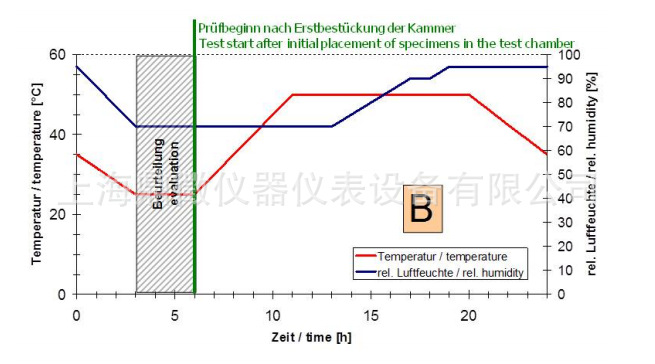
Fig.: 3: 24 h-cycle B without freezing phase, without salt spray, with evaluation phase

Fig. 4: 24 h-cycle C, with freezing phase, without salt spray
5.2 Test interruption
Interruption of the test or opening of the test chamber is only permitted during the evaluation phase (cycle B). The test chamber may not be switched off during this time.
No interruption of the salt spray phase is permitted. Longer interruptions of the cyclic climate phases are to be avoided; if unavoidable, they must be mentioned in the test report.
5.3 Placing specimens in the chamber
The specimens shall preferably be positioned in the chamber at an angle of 65° to 75° relative to the horizontal with the side to be tested uppermost. Components are to be positioned as agreed with the principal, preferably in the orientation in which they will be installed. The specimens (or components) may not contact each other or shield other specimens from the salt spray.
When using two separate test chambers for the salt spray phase and the cyclic climate phase, the specimens may not be allowed to dry-out when being transferred from one chamber to the other.
Vehicle components or special corrosion test plates may also be used as specimens for the test. In the case of components, special care shall be taken to ensure that salt solution does not pool on the specimen, as this will affect the test conditions (climate). If this cannot be avoided, such pooling must be removed at least once a week.
6 Monitoring of the test system
To ensure reproducibility of the results ob-tained by one test system, or rather the comparability of the results from different test systems, it is recommended to monitor these tests regularly.
6.1 Monitoring using mass-loss specimensSubstrate, dimensions, and preparation of the mass-loss specimens are defined in DIN EN ISO 9227.
The mass-loss specimens are positioned at 65° to 75 ° relative to the horizontal. The
back-side is to be protected from corrosion attack, for example with removable adhesive tape.
The removal of the corrosion products is defined in ISO 8407.
The evaluation of the mass-loss specimens is done by the gravimeteric method, by weighing the specimens after the test. The mass-loss specimens weighed with an accuracy of 1 mg. The mass-loss (difference of mass) is to be divided by the area of the exposed surface, to get the mass-loss with respect to one square meter
If the average mass-loss of at least 3 mass-loss specimens after three cycles testing time is 900 ± 220 g/m², the testing chamber is working satisfactorily.
Note:
The fractional values for relative humidity result from the specified condition that the temperature must be ramped up (35 - 50) °C at a heating rate of 0.125 K/min and that changes in relative humidity take place at a rate of 0.1 %/min for ramps of [(100-50); (70-90;
(90- 95)] % and 0.33%/min for ramps of (50-70) %. If in doubt, the data given in section 7.2 shall apply. When temperature ramps are passed through during periods of constant relative humidity, deviations of – 8 % to + 5 % relative humidity are accepted.


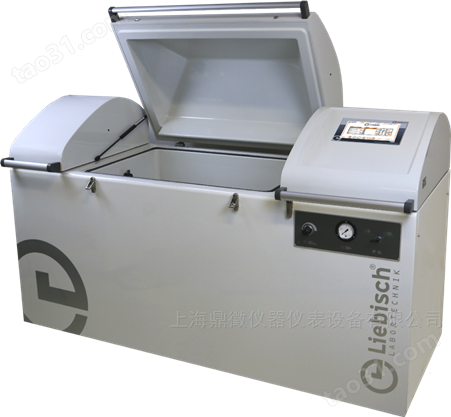
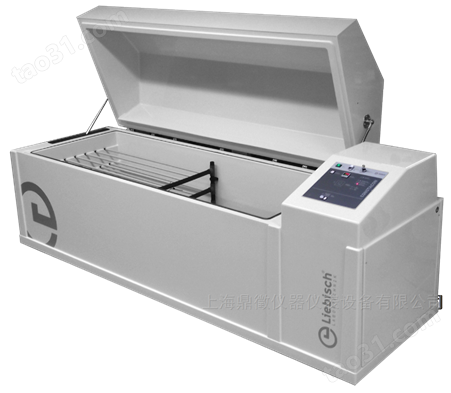

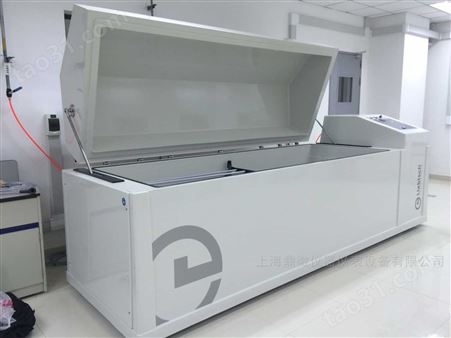

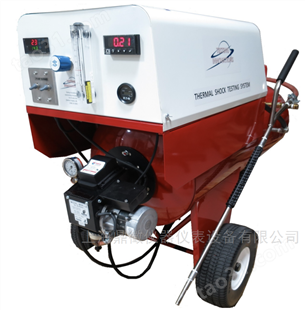
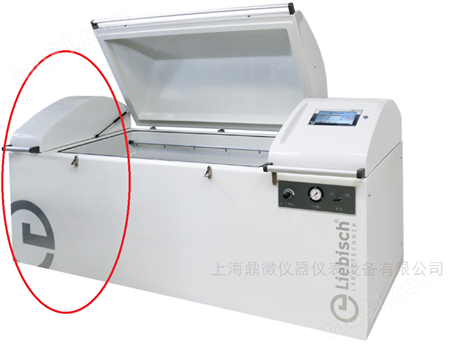
所有评论仅代表网友意见,与本站立场无关。